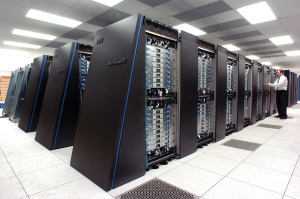How to plan and transform a financial trading data center
Today’s data financial services data center needs to be responsive to business needs. Jay Patani discusses how capacity planning can ensure that IT infrastructure is fit for purpose in an often volatile, fast-paced trading environment.

Jay Patani is a Technology Evangelist at ITRS Group, which builds real-time monitoring and analytics software for the world’s leading financial institutions. He has recently written a whitepaper on smarter capacity planning in financial services.
Market volatility is a fact of life for traders. Some love it and successfully ride the choppy waves of market uncertainty, while others fear the increased risk. Yet while the traders get all the attention during times of volatility, the IT which supports trading activity goes unnoticed (unless of course something goes wrong!).
The IT infrastructure that underlies trading is far from simple. It isn’t just the software responsible for executing the trades. Trading involves a complex interaction of numerous systems including routers, execution management software (EMS), order management software (OMS), gateways, message queues, market data systems, risk management software among many other components.
On a normal day, managing this infrastructure is no easy feat. Each component in the journey of a trade being executed represents a potential capacity bottleneck – which could impact latency or reliability and, in turn, cause client dissatisfaction. Being able to manage and plan capacity therefore becomes crucial in order for banks to support the current levels of trades and make informed infrastructure decisions based on expected future demand.

On an unpredictable day, the problem of managing IT capacity becomes more acute. IT teams must tread a fine balance of having enough spare IT capacity to cope with unexpected fluctuations in demand whilst also ensure that hardware and software costs do not spiral out of control. Just as traders need to respond with agility to the whims of the markets, so to must IT infrastructure scale in and out based on demand, without room for error.
Capacity Planning to the rescue
One of the biggest priorities of a CIO in financial services is to ensure the organisation is able to predict and plan for capacity so that the IT infrastructure meets the current and future needs of users. This where the discipline of capacity management and planning is pivotal.
Capacity usually varies across organisations, but it typically entails looking back at historical IT data. From this data, IT teams can make informed changes to trading systems to handle expected load with some spare capacity to allow for unexpected fluctuations. Headroom is a key term, which represents the amount of spare capacity allocated.
The old method of capacity planning involves manually collecting all the performance data, inputting it into spreadsheets or calculate capacity needs manually. In the new era, data is extracted in an automated way from a combination of business and IT data systems (historically in siloes).
With help of predictive algorithms, IT teams can learn the exact relationship between changes in business demand (for example, volume of trades) and IT resources. With this information, organisations can start to become more proactive in estimating how hardware needs to change to support future events. For example, in the context of FX trading, there are numerous events in the economic calendar where traders are expecting increased activity.
FX IT teams can – in coordination with front office – use advanced capacity planning to forecast how much more compute power to purchase to support spike in activity on a Non-Farm Payroll day or when there is an important announcement from the Federal Reserve.
Trading in the cloud
Capacity Planning can drive real value when a trading team wants to embark on an ambitious IT project, such as migrating to the cloud. The cloud, once an anathema to the banking industry, has now become a popular trend. At this moment, there are already many cloud solutions in the trading sector usually aimed at back or middle functions.
Algorithmic trading platforms and data feeds, are still largely hosted in banks’ physical data centers. However, even this is changing. In fact, even setting the potential cost savings aside, there are other benefits to migrating the front office to the cloud. For example, the creation and backtesting of trading algorithms could highly benefit from the computational power and scalability of the cloud.
But moving to the cloud isn’t easy and requires careful planning from an IT perspective. The first step to successfully transitioning to a cloud environment involves finding out the exact hardware needs of the applications in the physical data center.
Next, the organisation can use ‘what-if scenario’ modelling to see how different applications could fit on different cloud environments. There are lots of moving parts in making this decision. For example, the CIO must decide which applications to move to the cloud first. After this, there is the decision of which cloud vendor to choose and what cloud server configurations are optimal.
However, regardless of whether a company has a physical data center, operates in the cloud, or a hybrid of the two, IT will come an increasingly important factor to differentiate trading services. Smarter capacity planning means that IT is not just cost-effective but meet client SLAs and expectations.
Image: IBM Blue Gene commercial server and rack mounted storage farm. Copyright FinanceFeeds









